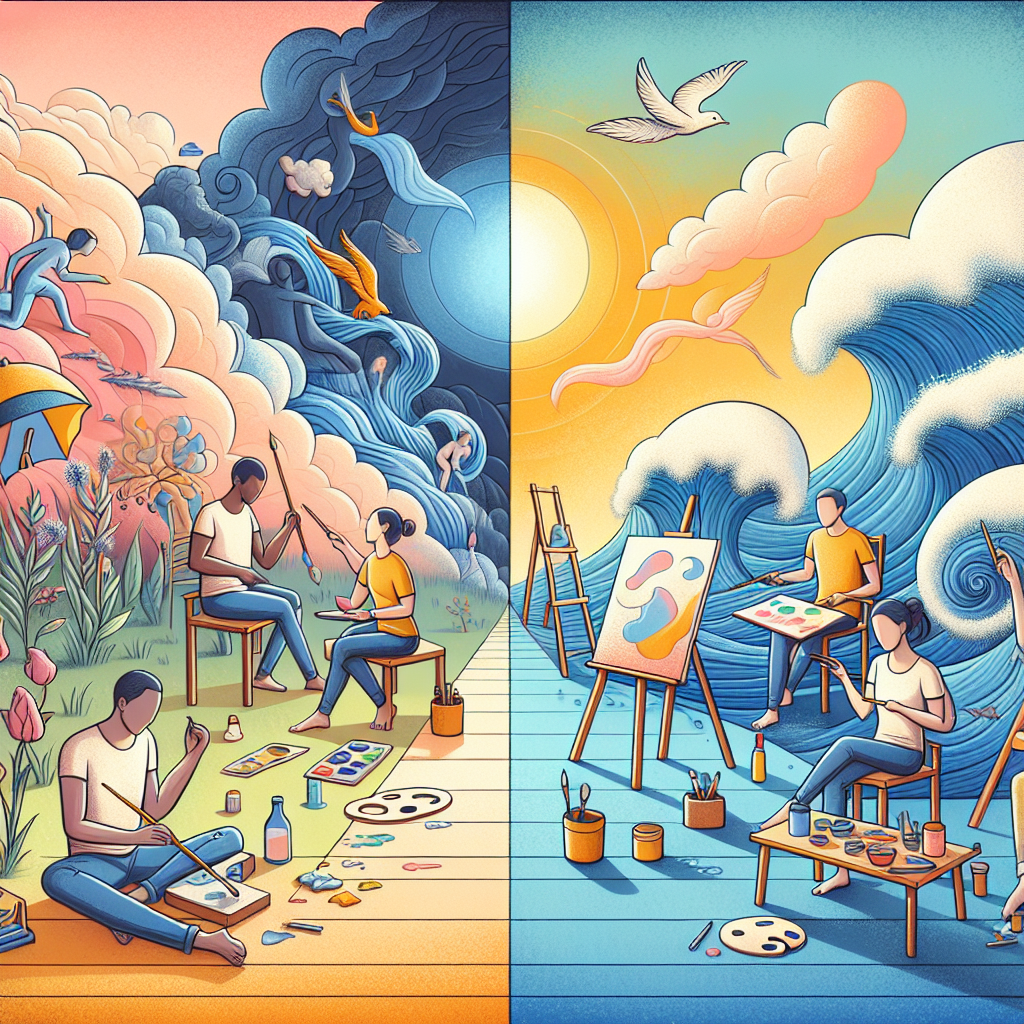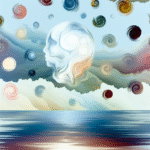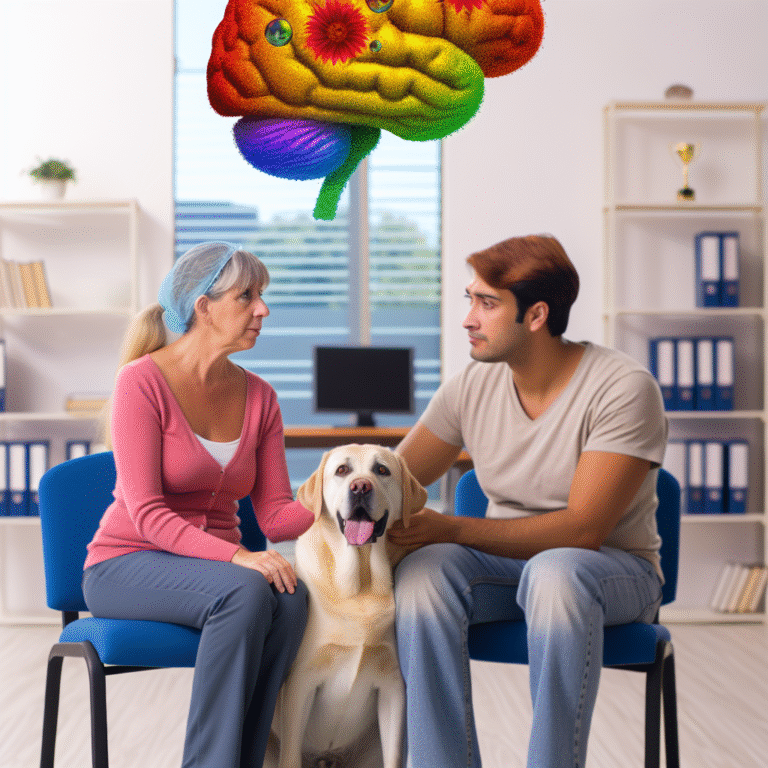
From Canvas to Calm: The Ultimate Guide to How Art Therapy Works and Its Impact on Well-being
Introduction
In a world where stress and anxiety have become commonplace, individuals are increasingly seeking innovative ways to restore their inner peace. Among these, art therapy has emerged as a beacon of hope. From Canvas to Calm: How Art Therapy Works and Its Impact on Well-being is not merely a phrase; it encapsulates the transformative journey many individuals undergo when they engage with the creative process. Whether it’s painting, drawing, or sculpting, the act of creating art can serve as a powerful therapeutic tool, promoting emotional healing, personal insight, and overall well-being.
Understanding Art Therapy
What is Art Therapy?
Art therapy merges psychology and art, allowing individuals to express their feelings and thoughts through creative platforms. Unlike traditional forms of therapy where verbal communication reigns, art therapy provides a non-verbal outlet that can be especially beneficial for those who struggle to articulate their emotions.
The Therapeutic Process
The journey from canvas to calm typically involves several stages:
Discovery: Clients begin by selecting materials that resonate with them. This discovery phase allows them to engage with their emotions through colors, shapes, and textures.
Creation: The act of creation is spontaneous and often free-flowing, which allows for exploration without judgment.
- Reflection: After the creation process, clients reflect on their artwork. This phase fosters deeper understanding and provides insight into their emotional landscape.
Why Does It Work?
Art therapy works on the principle that engaging with creative processes evokes emotional release, reduces anxiety, and enhances self-esteem. The correlation between creativity and mental well-being has been supported by numerous studies, illustrating that those who partake in artistic endeavors often report feeling more grounded and emotionally balanced.
Case Studies in Art Therapy
Case Study 1: Transformative Power of Painting
Background: Sarah, a 30-year-old woman coping with depression, joined a community art therapy group after feeling overwhelmed by her daily life.
Process: Throughout her sessions, Sarah experimented with watercolors and mixed media. She created pieces that mirrored her emotional journey, showcasing her struggles and triumphs.
Outcome: Over time, Sarah discovered her passion for color and expression. The act of painting became a soothing ritual, helping her articulate feelings she had long buried. This case vividly illustrates From Canvas to Calm: How Art Therapy Works and Its Impact on Well-being, showing a clear connection between artistic expression and emotional resilience.
Case Study 2: Healing Through Sculpture
Background: John, a veteran suffering from PTSD, participated in an art therapy program designed specifically for individuals with trauma.
Process: Using clay, John sculpted forms that represented his internal battles. Through his hands-on engagement with the medium, he found a safe space to confront his feelings.
Outcome: John’s sculptures became a dialogue through which he could express his fears and hopes. This tangible representation of his experiences significantly aided his recovery, underscoring the theme of How Art Therapy Works and Its Impact on Well-being even for those who might find it difficult to share their experiences verbally.
How Art Therapy Benefits Mental Health
Emotional Expression
Art therapy provides a safe environment for individuals to express emotions that may feel overwhelming or shameful. By creating art, clients articulate feelings without the constraints of words.
Stress Reduction
Engaging in creative activities has been shown to decrease cortisol levels, the hormone associated with stress. The repetitive motions of creating—like brushing or molding—can usher in a meditative state.
Enhanced Self-Esteem
Creating art fosters a sense of achievement. Individuals often find pride in their creations, boosting their confidence and self-esteem, which is vital for overall mental health.
Community and Connection
Art therapy can also provide a sense of belonging. Group sessions allow individuals to connect with others who face similar challenges. This camaraderie often leads to community building and shared healing experiences.
Key Statistics
| Benefit | Percentage Improvement in Participants |
|---|---|
| Emotional Expression | 70% reported improved emotional clarity |
| Stress Reduction | 60% experienced decreased stress levels |
| Self-Esteem | 75% reported a boost in confidence |
| Community Connection | 80% found a supportive network |
Table Analysis
The table highlights quantifiable benefits derived from art therapy, reinforcing the well-documented premise of From Canvas to Calm: How Art Therapy Works and Its Impact on Well-being.
Practical Applications of Art Therapy
Individual Therapy
Tailored sessions that address personal challenges allow for individualized attention and progress tracking.
Group Therapy
Facilitates communal learning and support, encouraging participants to share their experiences and art.
Workshops
Integrative workshops provide opportunities for exploration in a less formal setting, making art accessible to a wider audience.
School Programs
Integrating art therapy in educational institutions has shown promising effects in reducing student anxiety, improving self-esteem, and fostering emotional intelligence.
Conclusion
In the symbiosis between art and healing, From Canvas to Calm: How Art Therapy Works and Its Impact on Well-being is a clarion call to explore creativity as a means of personal transformation. For those seeking solace from anxiety, stress, or emotional turmoil, art therapy offers both an engaging outlet and a path to self-discovery. The canvas holds transformative power—which can lead to calm.
Motivational Takeaway
So, whether you are an artist at heart or someone who has yet to dip a brush in paint, consider this: every stroke of creativity broadly opens the door to rejuvenation and healing. Embrace your artistic side; it may just lead you from canvas to calm.
FAQs
1. What materials do I need for art therapy?
You can start with basic supplies like colored pencils, watercolors, clay, or even recycled materials. The focus is on the process rather than the outcome.
2. Do I need to have artistic skills to benefit from art therapy?
Not at all! Art therapy is about expression, not perfection. Everyone can find their unique voice in creativity, regardless of skill level.
3. How do I find an art therapist?
Look for certified art therapists through local mental health clinics or online directories like the American Art Therapy Association.
4. Can art therapy replace traditional therapies?
While art therapy is effective, it can complement rather than replace traditional mental health treatments. Always consult with a professional for personalized advice.
5. How can I get started with art therapy on my own?
You can start journaling art by sketching your feelings, painting your dreams, or even creating a vision board. The important part is to engage and express.
Embrace the journey from canvas to calm. The transformative possibilities of art therapy await you, ready to uplift and restore your well-being.













